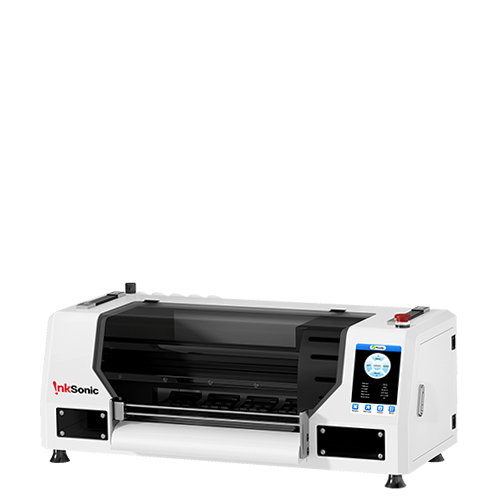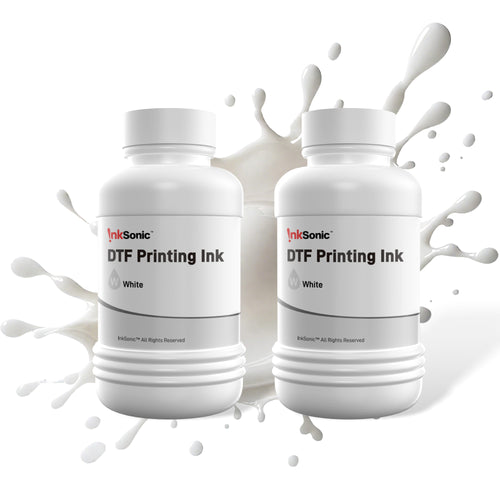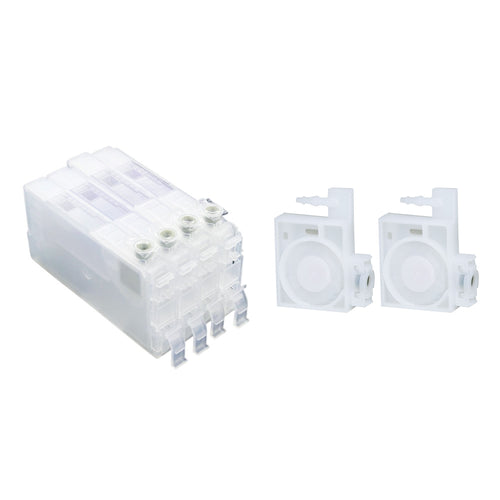When it comes to doing DTF transfers, design size and location aren't random at all. The right sizing and the exact positioning do not just make your product appear more attractive but also enhance how well it fits and feels on. Both novice and veteran printers tend to have a hard time figuring out how to find the optimal print placement and how to prevent transfer mistakes.
This article will help you systematically master the most important size and positioning principles in DTF printing, giving you a solid crash course to easily create professional-quality work.
1. Common Print Placement References
If you’re lacking inspiration for print placement, here are some popular and commonly used areas for DTF transfers:

2. How to Achieve Accurate Positioning and Size Design
Knowing roughly where to place a design isn’t enough. The eye on its own tends to misalign, and a design that works well flat on a screen may look completely different when being worn. To ensure your design is optimum with proper proportions on the garment, you need to know the ideal size for each position point and how to place and align it perfectly.
Below is a complete reference chart for design sizes and positioning to help you quickly master the best approach for every part of the garment.
2.1 Design and Positioning Size Reference


2.2 Details display

Tips:
Garment Type Consideration: Hoodies, jackets, and sweatshirts tend to have more print space than fitted T-shirts. Size and position your design according to the garment style and material type.
Measure First Before Printing: In every instance, measure the garment prior to printing to ensure that your design is well-fitting. Refrain from putting designs on seams, pockets, and zippers.
Proportion the Design: For square or rectangular designs, keep the height and width proportionate so that the design does not get distorted. The below sizes are used as general recommendations only—scale as needed for specialist or one-off designs.
3. How to Position Your Design for Best Results
Too-large design will look clunky, and too-small design will be lost or overlooked. To ensure proper placement, make the best use of the positioning tools. Typically, place your design in the middle horizontally and maintain top and bottom margins equal.
Placement Hints:
In print-on-front designs, place the design 2.5 to 3 inches from the neckline.
Fold the shirt halfway up vertically to identify and mark the middle line. Use T-shirt guiding lines or laser tools to assist with placement.
Temporarily holdthe transfer film in place using heat-resistant tape to prevent movement when pressing.
Hoodie Special Tips:
Push designs downwards from the front to ensure they aren't hidden by the hood.
Avoid areas over pockets or seams.
Get creative and put designs on sleeves or the hood to create a unique design.
Warning:
A 0.5-inch variation can be disastrous for the final result.
Adult and child garments are not supposed to use the same design size.
Avoid printing over-stretched areas or seams in order to prevent distortions.
3.1 Common Problems & Solutions
Design Too High or Too Low
Issue: Designs too close to the neckline or hem cause imbalance and look weird when worn.
Solution: To have big front prints, mark placement with alignment powder before pressing. Use heat-resistant tape to hold the transfer film in place. T-shirt alignment guides or folding methods guarantee correct placement.
Same Design Size for All Garments
Issue: One size fits none. A 10-inch art might work on a medium T-shirt but is too small for a 3XL or too big for a kid's shirt.
Solution: Scale design size with garment size. Look at a DTF size chart.
Hoodies: Add 1 inch to front/back prints.
Thick fabrics: Add 0.5 inch on pockets, sleeves, or chest prints so they don't look smaller.
Aligned Designs
Issue: Even small misalignments make designs warped and amateurish.
Solution: Fold the shirt to find the centerline. Use heat press rulers, laser guides, or tools like Gang Sheet Builder to align the design. Double-check always before pressing.
Omitting Fabric Stretch or Shrinkage
Issue: Printing on stretchy zones like cuffs or waistbands can warp designs when washed.
Solution: Don't press over stretchy areas like ribbed cuffs, collar, or waistband. On activewear or stretchy blend fabrics, press with a bit more pressure. Never press anything that's not flat.
Bubbling or Wrinkling
Issue: Bubbling, wrinkles, or peeling are due to uneven heat or pressure.
Solution: Use a flat, evenly heated press. Have temperature, pressure, and time match material. Use a Teflon sheet if needed for even pressure. Have garment stability and film stability while pressing.
4. DTF Transfer Size Table
Type/Part |
XS/S |
M/L |
XL |
2XL |
3XL |
Shirt Front |
9.25 in |
10 in |
10.8 in |
11.25 in |
11.5 in |
Shirt Back |
10.25 in |
11 in |
11.8 in |
12.25 in |
12.5 in |
|
Hoodie/ Sweatshirt Front |
10 in |
11-11.2 in |
12 in |
12.5 in |
13 in |
|
Hoodie/ Sweatshirt Back |
11 in |
12-12.2 in |
13 in |
13.5 in |
14 in |
Youth T-shirt Front |
8 in |
8.5 in |
9 in |
9.5 in |
10 in |
|
Youth T-shirt Back |
9 in |
9.5 in |
10 in |
10.5 in |
11 in |
3 in |
3.5 in |
3.8 in |
4 in |
4 in |
|
Sleeve |
2.8 in |
2.8 in |
3.2 in |
3.2 in |
3.2 in |
Label |
2 in |
2.5 in |
3 in |
- |
- |
Tote Bag |
8 in |
9 in |
10 in |
- |
- |
Hat |
2 in |
2.5 in |
3 in |
- |
- |
5. Simple DTF Transfer Process
Print the Design: Scale your design to suit the size of the garment.
Prepare the Garment: Iron the garment flat and pre-press out moisture and wrinkles.
Cut the Transfer Film: Cut the film to size, leaving a little margin for easy handling.
Align the Design: Set devices or fold the garment to find the center point. Align the transfer film in its proper position and secure it with heat-resistant tape.
Heat Press: Adhere to the prescribed temperature and pressure duration exactly. Very short pressing can lead to incomplete transfers, and very long pressing will lead to yellowing and peeling issues.
Peel After Cooling: Slowly and evenly peel the film after cooling, so no damage is done to the design.
Final Check: Verify that the design is flat, properly centered, and that colors are bright and accurate.
6. Conclusion
DTF printing is all about precision. Every step—design size, where you put it, how you do it—directly affects the final product. But with planning and caution, you simply create more professional and better work. I hope this tutorial helps you, whether you're already making DTF or just beginning. Don't fall into common pitfalls, excel at your profession, and do work you can proudly stand behind. Master these skills quicker, get perfect results, and gain more satisfied customers.
































